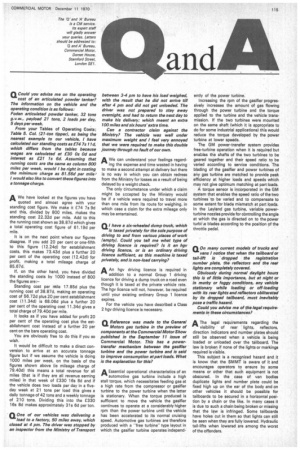n Reference was made to the General
Page 117

If you've noticed an error in this article please click here to report it so we can fix it.
Motors gas turbine in the preview of components at the Commercial Motor Show published in the September 11 issue of Commercial Motor. This has a powertransfer mechanism between the gasifier turbine and the power turbine and is said to improve consumption at part loads. What is the explanation for this?
A Essential operational characteristics of an automotive gas turbine include a high stall torque, which necessitates feeding gas at a high rate from the compressor or gasifier turbine to the power turbine when the latter is stationary. When the torque produced is sufficient to move the vehicle the gasifier continues to operate at a considerably higher rpm than the power turbine until the vehicle has been accelerated to its normal cruising speed. Automotive gas turbines are therefore produced with a "free turbine" type layout in which the gasifier turbine operates independ
ently of the power turbine.
Increasing the rpm of the gasifier progressively increases the amount of gas flowing through the power turbine and the torque applied to the turbine and the vehicle transmission. If the two turbines were mounted on the same shaft (which it is appropriate to do for some industrial applications) this would reduce the torque developed by the power turbine at lower speeds.
The GM power-transfer system provides free-turbine operation when it is required but enables the shafts of the two turbines to be geared together and their speed ratio to be varied according to service conditions. The blading of the gasifier and power turbines of any gas turbine are matched to provide peak efficiency at higher loads and speeds which may not give optimum matching at part loads.
A torque sensor is incorporated in the GM system that enables the speed ratio of the two turbines to be varied and to compensate to some extent for blade mismatch at part loads. In the Leyland gas turbine, variable powerturbine nozzles provide for controlling the angle at which the gas is directed on to the power turbLe blades according to the position of the throttle pedal.






























































































































































